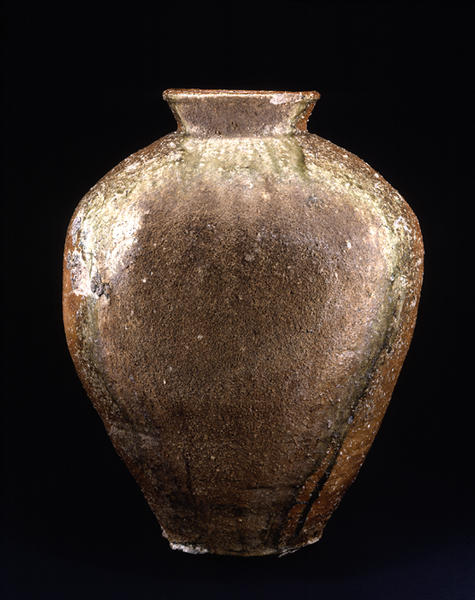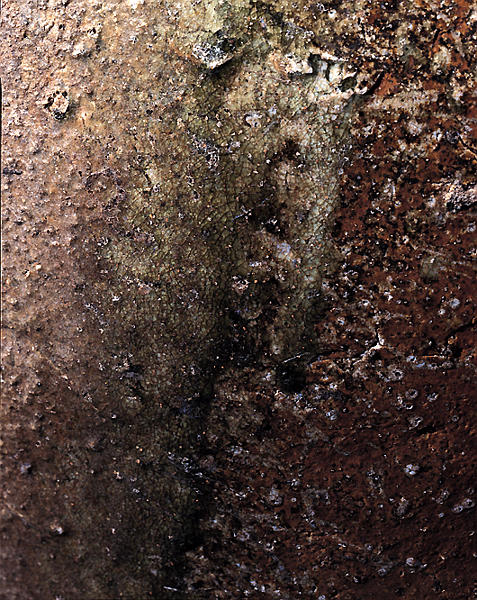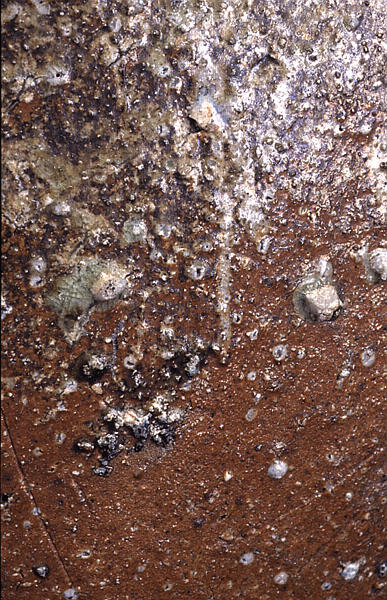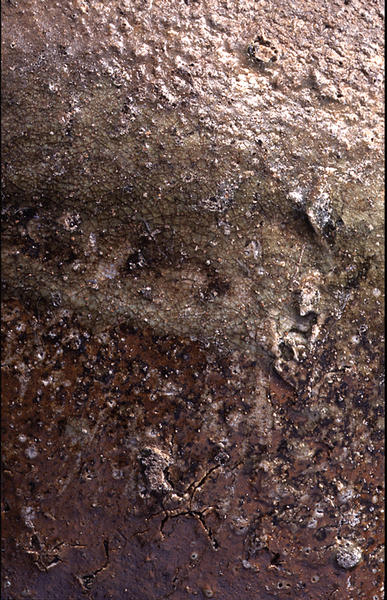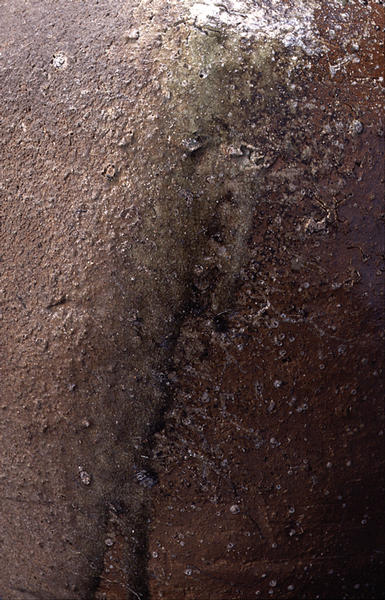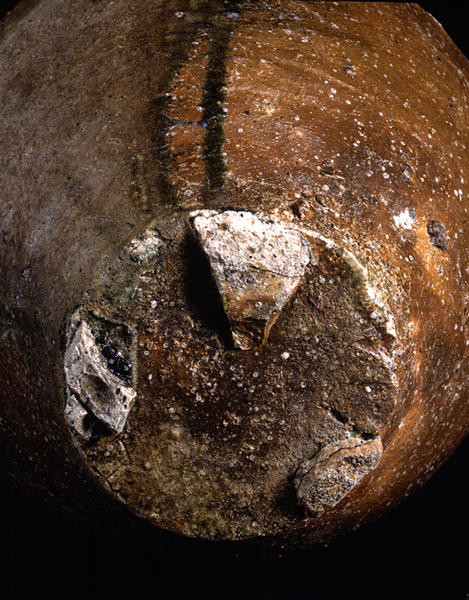信楽大壺
- 滋賀県・信楽窯
- 室町時代
- 15c
- 自然釉焼締陶製
- H-51 D-38
外反する口づくりで、口縁をひねり返して丸く丁寧に仕上げている。典型的な長胴形の壼である。素地は長珪石を多く含んだ土で、全体によく焼き締まっている。火表は降りかかった灰が大きく焦げとなり、その周囲が熔けて鮮緑色の自然釉となって流れ落ちている。火裏側は赤褐色の光沢のある器肌を呈し、長石粒の噴き出しも多い。胴部にはひっつきもあり、焦げ、自然釉、火色と、信楽らしい豪快な景色となっている。
はぎづくり(接づくり)
大きな壺などをつくる時にいくつかの部分に分けて形づくっていく成形法。輪状のものを下から順に乾いては積みして積み上げていきます。接合部にはさむ柔らかい土のことをはぎ土といいます。
信楽大壺
Catalogue Entry
Early Muromachi period, 15th century
Shigaraki ware, natural ash glaze
Height, 51.0cm; mouth diameter, 17.3cm;
torso diameter, 38.0cm; base diameter, 17.8cm
With an overall surface turned red by the flames of the kiln and white chunks of feldspar breaking the surface of the clay, large Shigaraki jars are some of the most fascinating wares of Japan's medieval period. This large jar is a typical example of this form. A variety of mouth shapes were used on Shigaraki wares of this general period, and this jar shows a short, outward-turning mouth and neck whose edge has a relatively fat, rounded form. The body of the torso was built up in three stages of clay coils to create the long torso form known as the hagizukuri shape. The joins between each of these coil layers are bent and can be clearly discerned, and this is a characteristic of this period of production and shared by other medieval period wares.
This large jar was well-fired to create a fire-red vessel surface. White bits of feldspar break the surface of the clay throughout the vessel, and half of the vessel is coated from mouth edge to base in a flow of dark green-colored natural ash glaze. These colored surface effects combine to create a particularly lively appearance. This is definitely one of the finest examples of large Shigaraki jars. SN
解説(春の玉手箱)
赤い火色の出た器肌の全面に白い長硅石が吹き出した信楽の大壺は,中世のやきもののなかでも最も魅力のあるものである。陶磁学者で陶芸家でもあった小山冨士夫氏は、その風情を「明るい陽をあびた枯野。信楽の壺をながめているとそんな感じがする。枯淡なうちに明るさがあり、どっしりとして重々しいが、のびのびとしてこだわりがない。信楽は平凡で素朴な農民の生活を象徴する、親しみのあるやきものである」と称賛した。この大壺はその典型的なものの一つであろう。胴は粘土紐を巻き上げ,四段に積み上げたいわゆる「はぎづくり」成形の長胴形をしている。各段の繋ぎ目が屈曲して外見的に明瞭なのも,他の中世陶器同様この時期の特色である。口頸から底部にかけての自然釉の流れや、灰被りの焦げなどに自然の景色が重なり、その魅力は尽きることがない。
